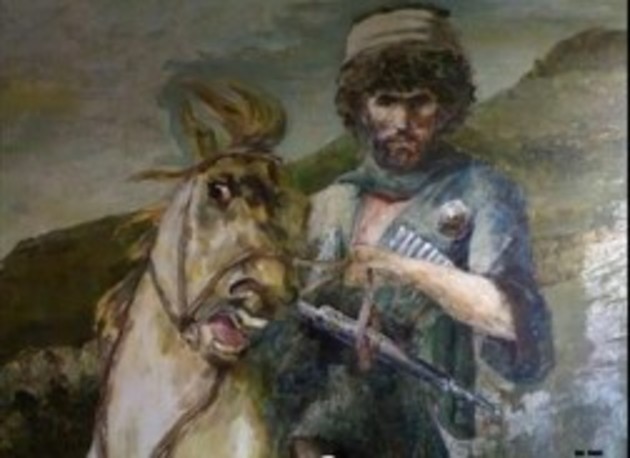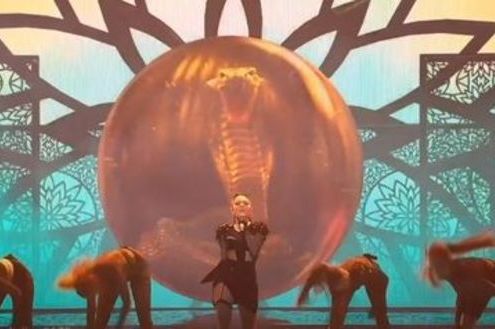Oleg Kusov exclusively for Vestnik Kavkaza
It happened in spring 1852. The brave naib couldn’t be captured alive by three hundred Cossacks and militiamen. Hadji Murad and five abreks fought to the last gasp. The scene was described by Leo Tolstoy in the novel “Hadji Murad.” Murdering the naib, the militaries captured his head only. His body was buried nearby, while the severed head was taken to St. Petersburg. They said it was needed for the scientific research of Nikolai Pirogov at the Military Medical Academy. But 162 years passed.
It is notable that Leo Tolstoy was interested in Hadji Murad, a naib of Shamil, rather than the imam himself or other heroes of the Caucasus rebellion of the 19th century. The naib’s fate is full of typical contradictions between Russian and Caucasus people, illustrating the complexity of their relations. Russian-Caucasus relations are still complicated today. This is proved by the skull of Hadji Murad, which became an ordinary museum item for years in the Museum of Anthropology and Ethnography of the Russian Academy of Sciences. It is like a skull of ancient people, which are found by archeologists. But in this case we are speaking about a historical person and pride of the Caucasus.
Hadji Murad lived for 36 years. During his life he served the Imamah and the Russian Empire. When he was 20, the Russian authorities appointed him the head of Avaria. In four years he became a victim of intrigues and shifted to Shamil and became his right-hand man for 10 years. But he faced a big problem – the wife and children of Hadji Murad were held captive by Shamil’s people, and the naib returned to serve the Russian tsar. He wanted one thing – the return of his relatives, placing his hopes on the Russians. He settled in Tbilisi, communicated with representatives of the tsarist administration; but they say the sides didn’t trust each other. The Tsarist generals wanted to attract hardy mountain warriors by the example of the imam’s naib shifting to their side. The Russian generals didn’t help in returning the wife and children to Hadji Murad. Shamil answered Hadji Murad’s letter: if you are a traitor, it shouldn’t happen to your family, which stays in a place where real highlanders should be.
Hadji Murad was in despair. One April day he decided to rescue his family on his own. That’s how Leo Tolstoy described the day: “Hadji Murad was allowed to ride a horse near the town, but he was convoyed by Cossacks. There were fifty Cossacks in Nukh. Ten of them served the leadership, the others, if they were sent in tens, as it was ordered, should be on duty every second day. So, on the first day ten Cossacks convoyed him, but then only five, asking Hadji Murad to take not all his henchmen simultaneously. But on April 25th Hadji Murad took a walk with all five of his henchmen. When Hadji Murad mounted a horse, a commander noted that all five henchmen intended to go with Hadji Murad, and he told him that it was forbidden, but Hadji Murad pretended he didn’t hear the commander and started to ride, while the commander didn’t insist…”
The consequences were tragic for everybody. Hadji Murad and his henchmen decided to shake off the Cossacks. As a result, a fight started. Only one Cossack remained alive, Mishkin was his surname. A hundred Cossacks and militiamen chased the runaways. Then Gadji-Aga Mekhtulinsky and his people joined them. There were 200 of them. Of course Hadji Murad and his five henchmen couldn’t resist such forces for a long time, but they didn’t surrender. Three hundred people killed both Hadji Murad and his horsemen. Leo Tolstoy wrote: “Gadji-Aga stepped on his back, cut off his head with two blows and rolled it away with his feet carefully so as not to foul his boots in blood…” It happened on the territory of modern Azerbaijan in the village of Ondjaly.
The preserved head of the naib was taken to Tbilisi. It was demonstrated at the anatomy theatre. Later it was sent to St. Petersburg to Professor Nikolai Pirogov. After that the naib’s skull was taken to the Kunstkamera Museum.
Earlier this year a book by the well-known Russian historian and writer Rudolf Ivanov titled “The Truth about Hadji Murad” was published in Moscow. The author tries to express a simple thought – a civilized country cannot keep the skull of one of the most honored heroes in the Caucasus in museum storages. The skull should be buried in the grave of Hadji Murad. “It was officially registered that Hadji Murad was buried beheaded,” Rudolf Ivanov says.
- The grave was excavated by experts, according to a decision of a special commission of the Azerbaijani government. I visited the grave and prayed there, like many others. The commission had been working for a month and proved that this was the real grave of Hadji Murad, as his left leg was broken. He wasn’t buried normally, he was dropped there like cattle. And in the grave the leg was crooked.
- Where should the skull be buried? There are different views on this.
- The Dagestani authorities tried to take away Hadji Murad’s skull from the St. Petersburg museum and bury it in Khunzakh, the naib’s homeland. In 2012 they opened a memorial monument there. We have great relations with many politicians and officials in Dagestan, especially with its head Ramazan Abdulatipov, but I stand strictly against burying it there. It is impossible for the body and the skull to be buried in different places.
The best option is to bury Hadji Murad in a new prominent place. I talked about it with the head of the Sheki Region. At the moment the grave is situated in an abandoned place, few visitors are able to get there. There is the Palace of the Khans in Sheki, a great cultural monument. It would be great to bury Hadji Murad with his skull nearby. And then, I believe, one country could address another country on the reburial of Hadji Murad in his homeland, the Dagestani village of Khunzakh. And that would be a beautiful deed!
- But still the museum doesn’t intend to give away its item called “Hadji Murad’s Skull.”
- It is not exhibited. It is important that top officials deal with the problem, and the museum’s administration give it for burial. At the moment they are presenting unreal demands. It was much easier to examine the remains of the tsar's family than the naib’s skull.
Rudolf Ivanov has many supporters. There is a view that the skull of the legendary highlander should be buried in Azerbaijan.
For how long will the skull of such an important historical figure for the Caucasus remain an ordinary museum item? Vestnik Kavkaza addresses the question to officials from the Ministry of Culture of Russia and society.






